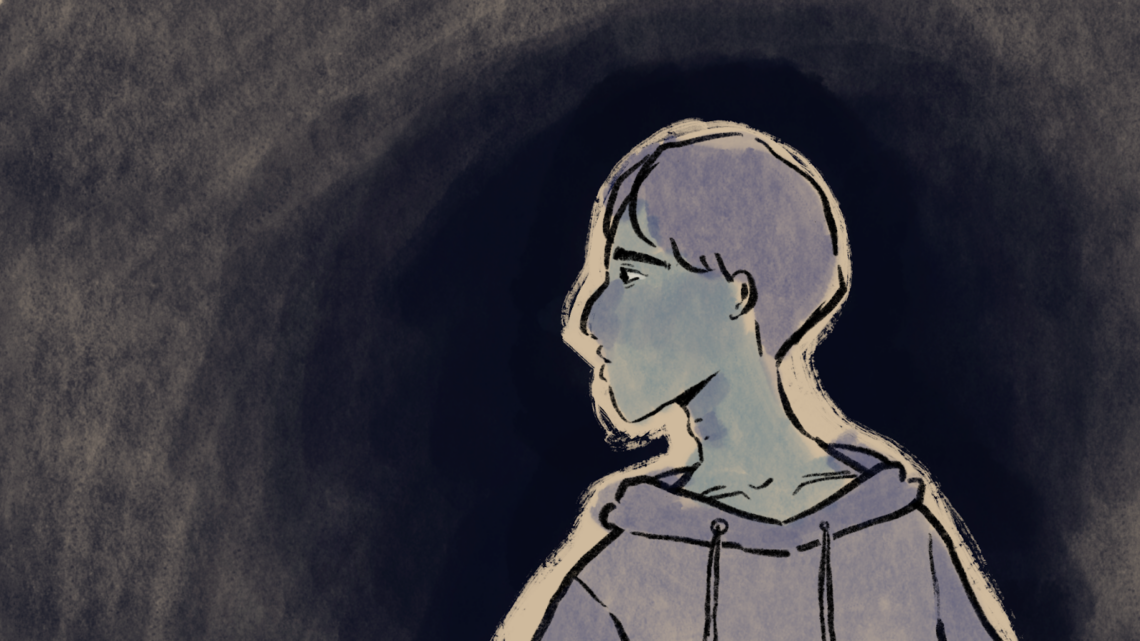Eating disorders in males are on the rise. Here’s what experts and students have to say about it.
Yahney-Marie Sangaré
Editor
The National Association of Anorexia Nervosa and Associated Disorders (NADA) reports that 9% of Americans will suffer from an eating disorder in their lifetime. With anorexia (a type of eating disorder) having the highest mortality rate of any mental illness, and conversations about mental health drastically increasing in a post-pandemic era, challenges still exist in having inclusive awareness. Specifically, of the nearly 30 million Americans who will suffer from an eating disorder in their lifetime, 25% will be male.
“The stereotypical media representation of someone who is affected by an eating disorder has been a white, young female in a lower weight body. We know that eating disorders affect people of all ages, races, genders, sexual orientations, socio-economic status, weights and sizes,” said Elizabet Altunkara, Director of Education at NEDA. “This misperception may lead to the under or undiagnosis of men with eating disorders and may prevent men from seeking help and support.”
From 1999 to 2009, the Healthcare Cost and Utilization Project found a 53% increase in male adolescent hospitalizations for eating disorders. The New York Times published an article in 2021 documenting the explosion in diagnoses of eating disorders, which stretched already-scarce resources thin. Although eating disorders are not new (‘anorexia nervosa’ was coined in the 19th century), a wide-scale public acknowledgment of eating disorders only came in the late 20th century. Now, it may be necessary to have another conversation. The challenge — for schools, parents and people — is when and where.
The American Psychiatric Association defines eating disorders as “behavioral conditions characterized by severe and persistent disturbance in eating behaviors and associated distressing thoughts and emotions.” Although eating disorders occur across all age groups (with the median age of onset being 18 for anorexia nervosa and bulimia nervosa), a 2015 study found that the age at which eating disorders are most likely to occur in men was lower than that of women.
In 2013, Virginia signed HB 1406, mandating that the Department of Education work with the Department of Health — alongside various organizations, including NEDA — to develop a framework for parental education around eating disorders. The 2020 Health Standards of Learning outlines eating disorder education for students in seventh and ninth grade, including warning signs, symptoms and knowing community resources. Still, in ACHS, many students’ first exposure to eating disorders far predates learning about it in a health class–if it was ever addressed at all.
“I don’t think I’ve ever seen [eating disorders] covered in schools,” said junior Sophia Waldhoff. “Sometimes, there might be a character in a book we’re reading that’ll have an eating disorder, and the teacher will say, ‘eating disorders are bad,’ but that’s it.”
“My first exposure to eating disorders as a concept was in school, but as a thing, probably from peers,” said junior Finn McBride. “You get the rough low-down in health class, but it’s not in depth.”
Although resources for eating disorders exist, they’re often in limited supply. A 2014 study found that 80.6% of surveyed residency programs in the United States did not offer any form of eating disorder training.
“We know that most doctors don’t receive training on eating disorders in medical school or in their residency. Since eating disorders are complex illnesses, we always recommend seeking help from a professional who specializes in eating disorders. There are many efforts to raise awareness of eating disorders for primary physicians so that they are at a better place to recognize the signs and refer the patient to appropriate resources,” said Altunkara.
This lack of education bleeds into public knowledge. Although statistically most people will know at least one person with an eating disorder, rarely are informed conversations held, especially among men. Media portrayals with characters that are not white women are also fairly uncommon, and social media might be feeding the problem.
“The only representation I’ve seen that features a male is Heartstopper by Alice Oseman,” said senior Owen Maccubbin. “I’ve not had any formal [education] telling me how to deal with a [friend opening about an eating disorder.] I don’t think I’ve ever been told what an eating disorder is in school.”
“Eating disorders are barely talked about [among men], and if they are, [they’re] used as an insult,” said McBride.
Considering eating disorders manifest from a myriad of interwoven issues, treatment and prevention are often specified. Stigma — both around eating disorders and related mental health issues — is a predominant issue. And, although eating disorders are not strictly about body image, a lack of transparent conversations about mental health in men may prevent those with eating disorders from getting the help they need.
“The biggest misconception is that men cannot suffer from an eating disorder and that it’s just a female issue. The messages about the ‘the appearance ideal’ that we receive from the media are also slightly different for men. The “ideal” male body type in the media is lean and muscular. Exposure to these ideals may lead to body dissatisfaction in males, which we know is a risk factor for developing an eating disorder,” said Altunkara.
Outside of body image, eating disorders in both men and women can be caused by a variety of situational, psychological and genetic factors. However, sociological analysis of eating disorders in men has posed some common differences between the experiences of men and women. Various studies have found that mortality rates for males with eating disorders may be higher than that of women–possibly due to representation within diagnosis. Perceptions about eating disorders may cause shame in sufferers, especially men.
“People dismiss eating disorders as a teenage girl problem, like the people who are suffering are being dramatic. The ‘just eat’ mindset can be rooted in misogyny, but also in ignorance,” said Waldhoff. “Teenage boys feel a bit of embarrassment caring about the way they look at all.”
“I think in general, a lot of men are less outward about their emotions, they try to bottle things up,” said Maccubbin. “I think that makes them less likely to seek help or talk about their issues until the point that it is extremely bad, or to the point that they can’t function. . .. They have a sort of complex that they’d seem weak if they had certain issues, especially concerning mental health.”
Still, not all men have the same experiences.
“It’s not toxic masculinity that makes me worried about opening up [about mental health]; it’s toxic everything in general,” said McBride. “I don’t zero in on the male aspect; that really oversimplifies things when it’s really easy to blame it on the surrounding friction that men create.”
It is hard to zero in on a solution. Generally, eating disorders are treatable with intervention, support and professional treatment. Organizations like NEDA work hard to spread awareness of eating disorders, but there is also a fine line between what can be helpful to a vulnerable audience.
Although Waldhoff said that she thinks more comprehensive education on eating disorders is necessary, there were stipulations. “Yes, but [teachers] cannot just say, ‘This is what they are.’ You have to say, ‘this is what it is, and it will kill you.’”
If you or a loved one is suffering from an eating disorder, help is available. View https://www.nationaleatingdisorders.org/help-support/contact-helpline or talk to a trusted health professional for information and support.






